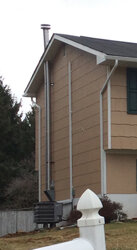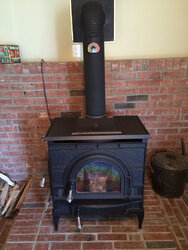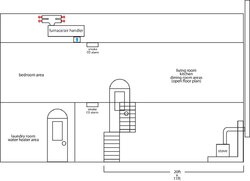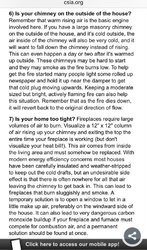Hi everyone,
I have a Dutchwest Majestic Cat Stove from 1996 and it's been burning great. However, every time the fire dies out, my CO alarms go off in the room. I've tried sealing everything and re-gasketed the entire unit. It's very frustrating and I'm not sure how to prevent it. My chimney is an exterior setup that skirts up the side of the house (pics included) so cold-chimney syndrome might be at play here. I can see the little red embers still glowing inside the stove and I'm afraid the gasses aren't rising up the chimney. Has anyone else experienced this problem or know of a fix? Thanks.


I have a Dutchwest Majestic Cat Stove from 1996 and it's been burning great. However, every time the fire dies out, my CO alarms go off in the room. I've tried sealing everything and re-gasketed the entire unit. It's very frustrating and I'm not sure how to prevent it. My chimney is an exterior setup that skirts up the side of the house (pics included) so cold-chimney syndrome might be at play here. I can see the little red embers still glowing inside the stove and I'm afraid the gasses aren't rising up the chimney. Has anyone else experienced this problem or know of a fix? Thanks.





